Windows Phone 8.1 Review
by Anand Lal Shimpi on April 14, 2014 10:00 PM EST- Posted in
- Smartphones
- Microsoft
- Mobile
- windows phone
- Windows Phone 8.1
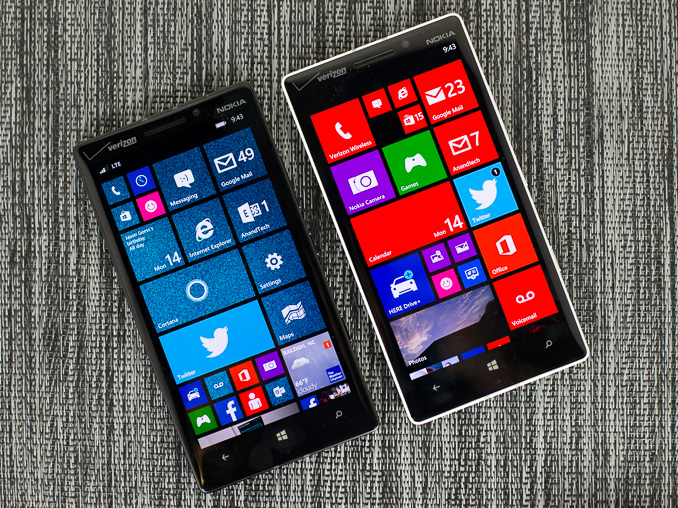
I was an early fan of Windows Phone 7. I remember completely switching over to the platform for about a month back in 2010, and being relatively happy. It wasn’t until I needed tethering support (which didn’t exist in the first release of WP7) that I had to move away. Unfortunately, Microsoft’s software and hardware update cadence for Windows Phone couldn’t pull me back.
In its first three years of existence, Windows Phone received roughly the same number of major updates as Android and iOS. From 2010 - 2013, Google took Android from Gingerbread to KitKat, Apple revved iOS from version 4 to 7, and Microsoft gave us Windows Phone 7, 7.5 and 8.0. At best, you can consider the software release cadence competitive. At worst, it’s not enough. Windows Phone started behind both Android and iOS. To come out ahead, Windows Phone updates had to be more substantive, more frequent or both.
The same could be said about hardware. Microsoft lagged behind Apple and Google to dual-core, 28/32nm silicon, higher resolution displays, and LTE support among other things. Although the situation has improved over the past year, if the goal is to take the #1 or #2 spot, the upgrade cadence needs to be more aggressive.
It always felt like the point of Windows Phone was to be a midpoint between the flexibility of Android and iOS’ guarantee of a certain level of user experience. The platform was born during a time when Android was not yet ready for the mainstream (Gingerbread) as an iOS alternative, and when it still looked like the Windows licensing model would work for handset OEMs.
Today the world is a different place. Android is far more mature than it was in 2010, and it’s polished enough where it can easily be a solution for the enthusiast as well as the first time smartphone user. While Microsoft’s strategy in 2010 might have been one of eyeing the crown, in 2014 the strategy is more humble and focused.
Improve the platform, address issues both little and big, and continue to grow. That’s the mantra these days and today we see it put in action with the arrival of Windows Phone 8.1, the fourth major release of the platform since its arrival in 2010.
I’ve spent the past few days using a Nokia Lumia Icon with the Windows Phone 8.1 developer preview (software available today). All devices capable of running Windows Phone 8 will be getting the 8.1 update for free over the next couple of months. Any new hardware vendors looking to ship Windows Phone 8.1 will be able to do so without paying Microsoft any licensing fees for the software itself.
Although the biggest change to Windows Phone 8.1 happens to be at the API level (including support for universal apps that can run on PCs, tablets and phones), there are a number of user facing feature enhancements that are worth talking about. Microsoft’s reviewer’s guide for Windows Phone 8.1 clocks in at 239 pages, so there’s no way I’ll be able to get to everything here, but I’ll go through several of the highlights.
Start Screen Updates
With the GDR3 update to Windows Phone 8, Microsoft added support for a third column of medium sized tiles on 1080p devices with a large display. With Windows Phone 8.1, that flexibility comes to all devices.
The third column is pretty nice, although admittedly the Lumia Icon I was testing WP8.1 on already had it thanks to the WP8.0 GDR3 update. You can use the third column to either have an insane amount of tiles on the display at once or keep everything nice and spread out. Windows Phone ends up covering the broadest spectrum of information density on its home screen as a result.
The other big change to the start screen is you can now set a photo as a background, instead of being limited to just white/black. With a photo as your background, your live tiles become transparent and allow your background to show through. Tiles that have a colored logo (e.g. Xbox Games, Facebook app) as well as any hub tiles (e.g. People) remain opaque. Despite going through three major revisions of the OS, Windows Phone hasn’t really changed much visually since its introduction in 2010. The ability to personalize the start screen goes a long way in making the UI more interesting.
The multitasking UI gets a slight update as well in WP8.1. You still tap and hold the back button to activate the UI, but you can now quit out of apps by swiping down on the app’s card.
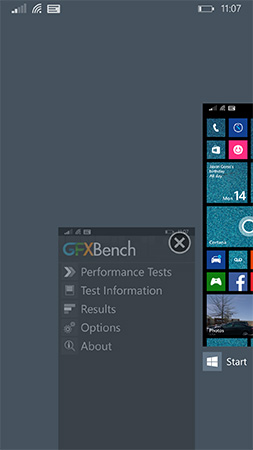
This is quite similar to what’s supported under iOS 7 (where it’s swipe up to quit). Unlike the iOS implementation however you can only swipe down one app at a time.
Revised System Specs
At the introduction of Windows Phone, Microsoft required that all OEMs have a physical camera button in addition to physical or capacitive buttons for back, home and search. It didn’t take long for Microsoft to remove the physical camera button requirement. With Windows Phone 8.1 the back/home/search buttons can be relocated on-screen, similar to what’s done on many Android handsets today. To accommodate those devices that inevitably ship without dedicated OS buttons, the screenshot button combination has changed from Power + Windows button to Power + Volume up.
The adjusted hardware requirements should make it easier for OEMs to take an existing Android hardware design and port it over to Windows Phone.
People Hub API, Disconnected Music+Videos Hub
When Windows Phone launched one of the major focal points was the People Hub, a single location for all of your contacts across all accounts/social networks. Previously you had to add accounts to Windows Phone in order for the People Hub to grab contacts from those accounts. With Windows Phone 8.1 Microsoft moves the People Hub from a push to a pull based service. If a 3rd party app supports it, all you need to do is login to the app itself and the People Hub will automatically pull in data from the app. Facebook is the best example of this as you no longer need to login to the Facebook app and then add your Facebook account separately to the People Hub. It’s a subtle change but one that echoes Microsoft’s new position on Windows Phone: rather than you conforming to Windows Phone, the OS should try and conform to you.
The other big hub change is the Music+Videos hub has been split up into two individual apps, each which can be updated independently of the OS.


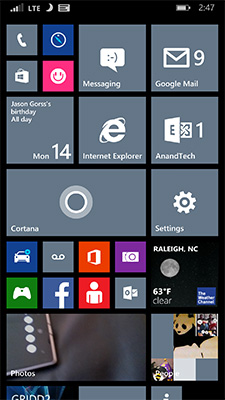
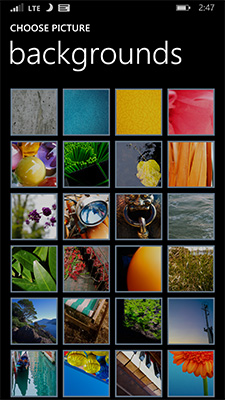

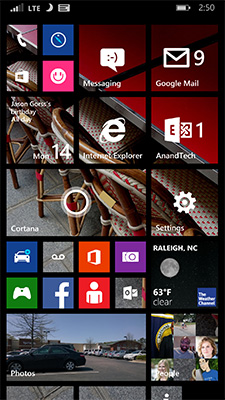
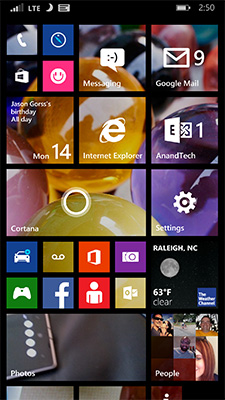
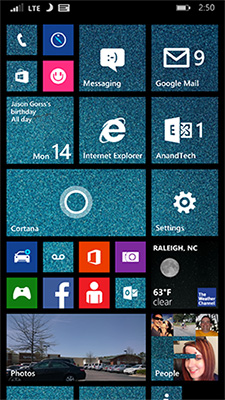
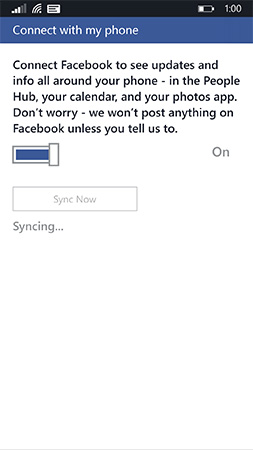








111 Comments
View All Comments
agag - Wednesday, April 16, 2014 - link
Apple bought Quattro Wireless, an Admob competitor, which is now iAd:http://www.reuters.com/article/2010/01/05/us-apple...
ab_aditya - Tuesday, April 15, 2014 - link
With reference to the last statement, the Nokia Lumia 720 has one of the best cameras at the mainstream price point. It includes a Carl Zeiss lens, and has pretty much phased out the costlier Lumia 820 since its introduction. I have been using the 720 for the last 10 months & have been a lot more pleased with its image quality than my Galaxy S3.Gadgety - Tuesday, April 15, 2014 - link
"... I suspect the real chance to win is if Nokia can point its camera excellence at a more mainstream price point."Yes, I agree. A Nokia/Microsoft phone with the 41mp camera brings lossless zooming, and with off line maps, plus transit info for both public transport and traffic in general, a mid range WP would almost be worth their price just for travelling world wide. I know a journalist that bought the 1020 as a camera first, and spent a lot of time mastering it before even starting to use it as a phone. Merging WP and RT is probably a step in the right direction, too.
B3an - Tuesday, April 15, 2014 - link
Finally some WP stuff on Anandtech. I would have liked this to go in to more detail though. It also doesn't really show just how big of an update this is, bigger than most updates Android or iOS has ever had, and certainly the biggest WP has had.PsychoPif - Tuesday, April 15, 2014 - link
I agree. I'm the first to whine when they don't review WP new phones or when they act like they are not competitive in other OS reviews, but this time, they are both on time and give good treatment to the update.I must say that I disagree with their conclusion though. Being an owner of a sufrace pro, I see the synergies between Windows and WP and that for me is worth more than being the first to receive overblown hardware feature or the next Flappy Bird.
MikhailT - Wednesday, April 16, 2014 - link
@PsychoPif, the problem is, we're not seeing any synergies yet for those who don't own either one. I see what Microsoft wants to do but Microsoft had a lot of awesome ideas over the last decade that never went anywhere.Windows 9 or Threshold is probably the moment that Microsoft can really reveal the purpose of their hard work over the past few years. I wish them all the luck.
Zepid - Tuesday, April 15, 2014 - link
Just so we are clear reviewer, Apple didn't do the "swipe up to quit" or "swipe away to quit" first. It was Palm.Taurothar - Tuesday, April 15, 2014 - link
Glad to see someone else make this comment. I loved the card system on my Pre, and I'm happy it has come to the other OS since the webOS died out.apinkel - Tuesday, April 15, 2014 - link
So much to learn.beck2050 - Tuesday, April 15, 2014 - link
I'm on a Note 3, having looked hard at Apple and Nokia Windows and both those fell far short for my purposes, IMHO. If Microsoft wants to break Android's and to a lesser extent IOS stranglehold on mobile space they need something spectacular, not bringing up the rear.